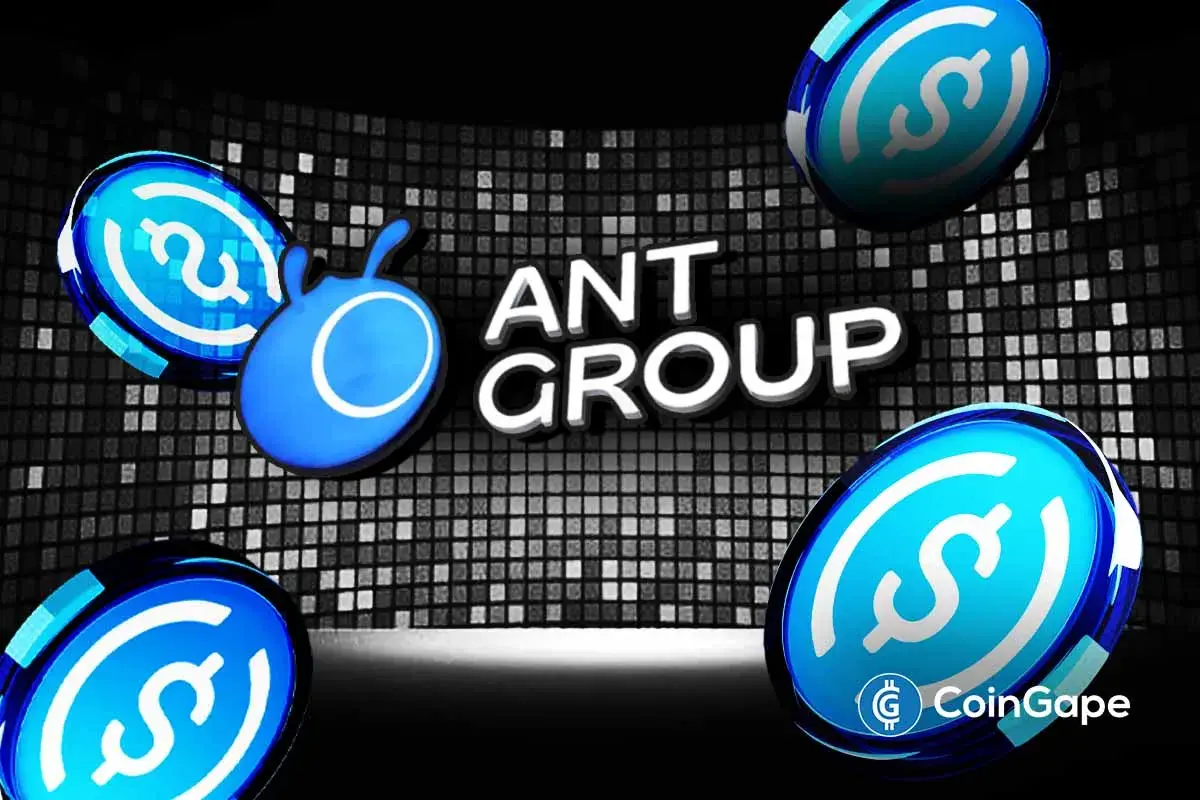China’s Ant Group Co. has partnered with Circle to integrate the USDC stablecoin into its blockchain system. This move indicates that Chinese fintech companies would be using regulated digital assets for international trade and fund management.
Ant Group Set to Integrate Stablecoin USDC
Ant International, the global unit of China’s Ant Group, plans to add Circle’s USDC to its global blockchain platform. According to a report from Bloomberg, the company plans to integrate USDC once stablecoin meets final U.S. compliance requirements.
While an exact timeline hasn’t been disclosed, Bloomberg suggests the partnership underlines Ant International’s long-term strategy to integrate more regulated cryptocurrencies, including central bank digital currencies (CBDCs) and tokenized deposits.
Ant International is changing its strategy to expand its blockchain-based payment services. Last year, its blockchain processed over $1 trillion in global transactions, with about one-third of that going through its blockchain systems. By using USDC, Ant could make settling cross-border transactions faster and clearer.
Circle’s partnership with Ant Group is its most significant China-focused move to date, potentially connecting the stablecoin’s liquidity to massive transaction volumes managed by Ant’s blockchain infrastructure. The results could be significant. By linking USDC to China’s fintech network, Circle may increase its use in one of the world’s key markets for digital payments.
Circle Expands Global Footprint with China’s Ant Group
Circle, the issuer of USDC, is growing its global presence. By working with Ant Group, Circle aims to bring regulated stablecoins like USDC to important financial markets, including China.
Over the past year, Circle has secured key partnerships worldwide. In Japan, USDC became the first dollar-backed stablecoin approved for circulation under the nation’s new regulatory framework. Circle was also the first to meet the new Value-Referenced Crypto Asset (VRCA) standards in Canada, ensuring USDC remains accessible on compliant platforms.
Furthermore, Circle also launched stablecoin payments in Brazil and Hong Kong through its Circle Payments Network. This move increases the presence of USDC in important emerging and Asian markets. By entering these markets, Circle makes USDC a helpful option for fast B2B payments and cross-border money transfers.
To add, beyond the USDC integration, Ant International is working on obtaining stablecoin licenses in Singapore and Hong Kong, as well as a permit in Luxembourg. This step demonstrates the company’s commitment to providing blockchain services that comply with global regulations, a growing trend in China’s fintech sector.
While formal approval is still pending, China’s Ant Group’s adoption of USDC indicates a growing trend toward regulated stablecoins in global finance. With Circle’s ongoing efforts, USDC could play a bigger role in international trade and blockchain-based payments.
Investment disclaimer: The content reflects the author’s personal views and current market conditions. Please conduct your own research before investing in cryptocurrencies, as neither the author nor the publication is responsible for any financial losses.
Ad Disclosure: This site may feature sponsored content and affiliate links. All advertisements are clearly labeled, and ad partners have no influence over our editorial content.


✓ Share: